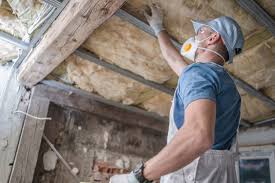Insulating your home or business is a critical decision with long-lasting implications for energy efficiency and comfort. Understanding the fundamentals of insulation, selecting the appropriate materials, and hiring the right professionals are essential steps towards enhancing your living or work space. This ultimate guide will navigate you through various aspects of insulation services, providing you with key tips to make informed decisions.
We’ll cover everything from the types of insulation best suited for different situations, financial considerations including potential savings and costs, how to identify quality service providers, and common mistakes to avoid. By the end of this guide, you should feel empowered to approach your insulation project with confidence.
Contents
Choosing the Right Insulation Material
Selecting the correct insulation material is paramount for maximizing energy efficiency and minimizing environmental impact. The most common types include fiberglass, cellulose, foam board, and spray foam. Each has distinct advantages and applicable scenarios—for example, fiberglass is usually cost-effective and easy to install but may not provide as tight an air barrier as spray foam. For specific regional demands, such as those faced by residents in South Carolina, opting for Professional insulation services Greenville can offer personalized advice based on local climatic conditions.
When choosing the material, consider factors such as R-value (resistance to heat flow), fire resistance, and potential for moisture buildup. Consulting with professionals can provide insights into what works best in your unique structural configuration and environmental exposure.
Understanding Insulation R-Values
The effectiveness of insulation is often measured by its R-value—essentially, its ability to resist heat flow. Higher R-values mean greater insulating power. It’s crucial to select the appropriate R-value according to your local climate zone recommendations and energy efficiency goals. For instance, homes in colder regions generally benefit from higher R-values to keep heat from escaping during harsh winters.
Taking time to assess this aspect can result in significant savings on heating and cooling costs and can play a vital role in achieving your energy-efficient home goals. Local building codes typically outline minimum R-value requirements which serve as a useful guideline but aiming higher can be advantageous if budget permits.
Professional Installation vs. DIY
Hiring a professional for installation typically represents a higher initial cost compared to doing it yourself, but it may save money in the long run due to efficiency and fewer mistakes. Professional installers are equipped with the skills and tools necessary to handle complex installations such as creating an airtight seal around irregular spaces and safely handling fiberglass or spray foam.
DIY approaches are feasible for simpler tasks like laying batts in an attic but generally lack the expertise required for more involved projects like retrofitting walls or floors with spray foam insulation. Weigh these options considering both your skill level and the size of the project.</2023d>
Maintenance Tips for Insulated Areas
Once your home or business is insulated, regular maintenance is important to maintain its efficiency over time. Check annually for areas where seals may have deteriorated or where the insulation has shifted or compressed. Be aware of any signs of moisture accumulation or pest infestation as these can compromise the effectiveness of the insulation material.
Cleaning ventilated areas regularly and ensuring that no debris blocks airflow are also crucial tasks that enhance effectiveness and extend the life span of your installed insulation.
Cost-Efficiency Strategies
Cost-efficiency strategies are essential for businesses aiming to maximize profitability while minimizing expenses. These strategies encompass various approaches, including streamlining operations, adopting technology to automate tasks, negotiating better terms with suppliers, and optimizing resource allocation. By carefully managing costs without compromising on quality or customer satisfaction, organizations can enhance their competitive edge in the market. Implementing cost-efficiency strategies requires a systematic approach, often involving thorough analysis, planning, and continuous monitoring to identify areas for improvement and capitalize on opportunities to reduce expenditures. Embracing these strategies not only supports financial health but also fosters sustainable growth and resilience against economic fluctuations.
Conclusion
Understanding and implementing the best insulation solutions for your home can significantly enhance comfort and reduce energy costs. By familiarizing yourself with the various types of insulation, assessing your specific needs, and considering factors such as climate, budget, and energy efficiency, you can make informed decisions that provide lasting benefits. Professional installation and regular maintenance further ensure optimal performance and longevity. With these key tips, you can confidently navigate the insulation process, creating a more energy-efficient and comfortable living environment.




